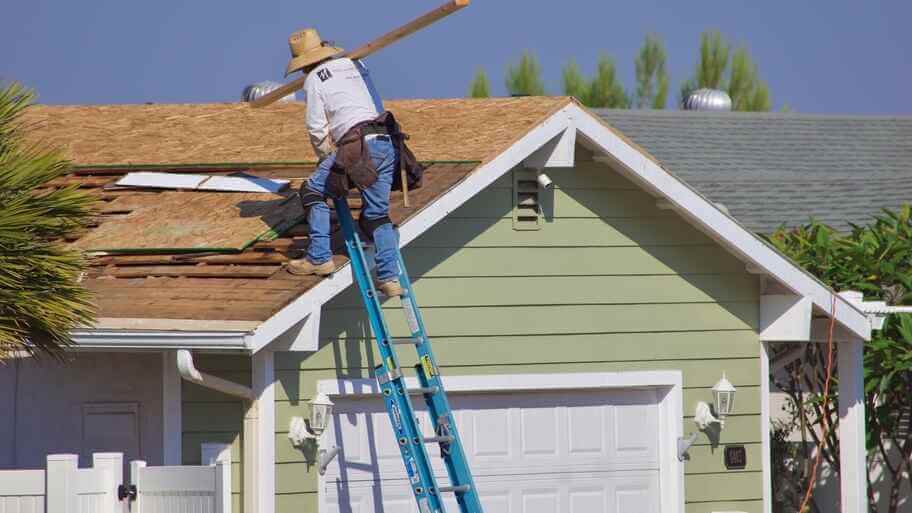Financing a home improvement can seem overwhelming, but with just a little digging around, you might find some options to offset the cost, and help pay your home improvement upgrades.
This guide will help you understand the different options you have available to fund your next big project, from personal loans and HELOCs to home improvement grants for single moms.
Best Options to Finance Your Home Improvement
Here are some of the best loan options to renovate your house into a dream home.
1. Personal Loan
One of the best ways to finance your home renovations is through a personal loan. A personal loan allows you to borrow funds without tapping into the equity in your home or putting up other assets for collateral.
The interest rates vary based on your credit score – but note that they will be higher than financing secured through your home. There is also a shorter repayment window, so be prepared to repay these loans within five to seven years.
You can access anywhere from $2,000 to $50,000 through a personal loan. That makes it the perfect solution for projects of all sizes. Another reason you should consider a personal loan is if you have good credit but not a large amount of equity in your property.
Before you refinance your mortgage and pay additional closing costs, start your next big project by exploring your personal loan offers. They are often the most affordable and easy-to-access options for repairing and renovating your property.
2. Refinance Your Mortgage
Is the interest rate on your mortgage higher than the average market rate? If the answer is yes, refinancing a mortgage can be a simple way to lower your monthly payments and get the funds you need to renovate your home.
A cash-out refinance involves taking out a new mortgage that is greater than your current balance – you simply pay off your existing loan and keep the difference as cash. The cash comes directly from the equity of your home, and you can usually borrow up to 80% of the total value.
However, refinancing your mortgage is not free. You are usually required to pay closing costs and re-establish your escrow accounts, so you must consider these additional expenses before moving forward.
As you decide how to prioritize home renovations with these funds, focus on those that will increase the value of your home. Only choose this option if the costs over the life of the new mortgage are lower than other options, like a personal loan.
3. Home Equity Loan
Another way that you can access your home’s equity to fund your renovations is through a home equity loan. This option allows you to get financing without refinancing your existing mortgage – instead, you take out a second mortgage.
A home equity loan might make sense if you already have a low interest rate on your home or favorable payment terms. Although the interest rate on this financing will be higher, the cost will only apply to the additional money you borrow from your equity since you do not have to pay off the current mortgage.
Consider an HEL if you have a substantial amount of equity in your home or need funds for a major, one-time improvement. However, consider that you may still need to pay origination fees and closing costs – and add a second mortgage payment.
4. Home Equity Line of Credit
A home equity line of credit, or a HELOC, can also help you finance your home improvement projects. It is like an HEL because it involves leveraging the equity in your home to access cash – but instead of establishing a second mortgage, a HELOC works like a revolving line of credit.
You can borrow up to 80% of the value of your home less the existing mortgage. Generally, you get a draw period of 10 years where you can borrow from your equity. During this time, you only cover interest with your payments, and then you pay off the rest during a 15-year repayment period.
It is important to note that the interest rate on these loans is variable, so it will change each time you borrow additional funds. You should use a HELOC for home renovations when you need to borrow funds for an extended timeframe. However, consider that adjustable rates can affect your payments, and they are typically higher than other options.
5. Credit Cards
If you do not have cash available and wish to avoid opening any new lines of credit, you can consider using credit cards to fund your home improvements. This should not be your first choice, though, since credit cards tend to come with higher interest rates.
0% interest credit cards are a viable option if you are willing to pay off your balances in a shorter time frame. These cards allow you to finance renovations at no cost, so long as you pay them off entirely within 12 to 18 months.
The benefits to using credit cards include not having to put your home or other assets up for collateral and the fact that many lenders reward you for using your credit line. However, the interest on credit cards can easily build up and leave you in more debt than you expected, as your payments are not fixed.
6. Home Improvement Grants
Did you know that there are home improvement grants for single moms or dads? These grants help single-parent households and first-time homebuyers repair and renovate their properties.
Most of the grants only apply to structural improvements that remove safety or health hazards, such as plumbing, roofing, and more. They can also be available to individuals affected by natural disasters, so make sure to explore all your options before you go into debt to renovate your home.
7. Pay Cash
If you want to improve your home without taking out any loans, consider paying in cash. While this may require some additional time to build up your savings, it ensures that you don’t spend any extra money on interest or financing charges.
Paying for your home improvements with cash can also help you stay within your budget!
Featured Image: Twenty20








